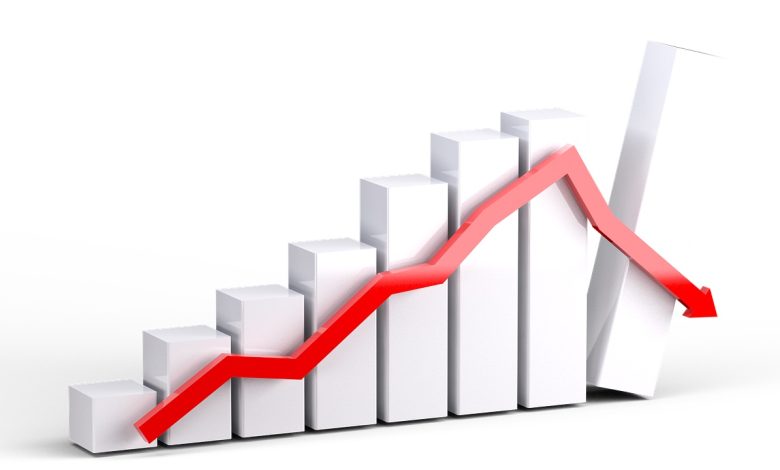Peter Schiff: Did the Fed Steal the Santa Claus Rally?

The US stock market had a potentially significant day on Wednesday. Markets have been rallying on the hope of interest rate cuts in the near future. But Fed officials have been trying to walk back those expectations. Did the central bankers manage to steal the Santa Claus rally? In his podcast, Peter Schiff talks about the recent moves in the stock market.
Wednesday started with another in a string of 52-week highs for all the major stock indices. Markets rallied early in the day despite FedEx dropping after a big revenue miss.
This should throw cold water on this parade that the economy is in great shape because the fact that a lot less stuff is getting shipped is an indication that maybe the consumer is running out of gas. He’s tapped out. He’s leveraged to the max. He has all this credit card debt. People are starting to have to pay their student loans again.”
Nevertheless, the stock market shrugged off that bad news.
Markets also essentially ignored a really bad Treasury bond auction.
But later in the day, markets tanked. After making a record high, the Dow Jones finished down 475 points. The NASDAQ fell 1.3%. The Russell 2000 dropped nearly 2%.
Not only did these indexes close negative after making 52-week highs, but they also closed below the low from the previous day. This is known as an outside reversal. Peter said outside reversal days are particularly relevant when they snap a significant trend.
The market was going higher day after day after day — a relentless string of gains. … All of a sudden, you get this reversal where the market just collapses. The sellers came out in droves and there were no buyers.”
Peter called it “potentially a very ominous technical sign” that we’ve seen a top. Whether it is a short-term or long-term top is hard to say.
It could be the beginning of a correction, not necessarily a new bear market where you see the markets down 20%.
So, what caused this reversal?
Peter said he thinks it was due to the Federal Reserve backtracking after signaling upcoming rate cuts at the December FOMC meeting.
Ever since Powell let the cat out of the bag and basically conceded that rates are coming down, and they’re coming down substantially, the markets got ahead of it. I think the mood on Wall Street was, ‘Happy days are here again. We’re going back to zero! We’re going back to QE.’ Because that is the experience of the past. Once the Fed starts cutting, they don’t stop until they get to zero. That’s what they’ve done in the past. So, why would anybody assume that the future is going to be any different?”
Keep in mind that Powell & Company went from saying the committee wasn’t even talking about rate cuts at the November meeting to projecting rate cuts one month later.
In one meeting, it was a complete pivot on rate cuts. Why shouldn’t the markets expect that a similar pivot is coming with respect to quantitative easing? That’s the big enchilada that coming — a return to QE.”
This brings back memories of 2019 when the Fed started expanding its balance sheet in response to the big stock market selloff in the fall of that year – long before COVID reared its ugly head.
If they couldn’t shrink the smaller balance sheet, it’s even less likely that they can shrink this even larger balance sheet — especially in an election year.”
Peter said you can typically count on the Fed to help an incumbent president in an election year.
So, the markets are getting in front of this. Obviously, it’s an election year. They want to put lipstick on the pig of an economy that is Bidenomics. What can the Fed do? Well, let’s start cutting rates. Let’s go back to quantitative easing. Let’s goose the markets. Let’s get people excited and let them believe that the economy is getting better. And maybe they think, ‘Who cares about these inflation numbers because we’ve just got to make it through the election.’”
But then you had a bunch of Fed members walking back the doveish rhetoric and calling rate cuts into question.
Since that’s the only thing the market has got going for it… It’s all about liquidity. It’s all about inflation. That’s the story. It’s an expensive market and the economy is weak. That’s the hope that the markets have been bid up on.”
Peter said the moves on Wednesday may indicate the markets have surrendered that hope – at least for the time being.
Unless the Fed wants to come to the rescue of the market by now reversing those calls, which it might do if the markets fall enough, we could see some significant downside in the markets given how big this run has been and how the only thing that’s propped it up is a bunch of hot air.”
Call 1-888-GOLD-160 and speak with a Precious Metals Specialist today!
Buka akaun dagangan patuh syariah anda di Weltrade.
Source link






